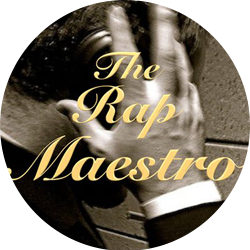This is an excerpt from my upcoming book Check Out My Melody: The Expert Musicianship Of Master Rappers, which will be fully published next year on McFarland Books. If you’d like regular updates on this book, with more excerpts on Kendrick and other rappers, drop me a line at [email protected]
Thanks and Love, – Martin
—–
After displaying his prowess on his first major CD Section.80, on which “Rigamortis” appears,” Kendrick Lamar upped the anticipation for every new song he comes out with on his next album, good kid, m.A.A.d city. That album’s song “Backseat Freestyle” is an excellent example of how the poetic aspects of rap inform how it is to be understood musically, and how rap’s musical aspects inform how it is to be understood poetically.
As we’ve already seen, Lamar is apt to blend the lines between different sections of his verse, as well as slightly differentiating between different iterations of the sections of his songs that repeat multiple times. “Backseat Freestyle” is no different, and these trends show up right away. Kendrick begins the song at 0:25 with a 4-bar, shortened preview of the material that will appear in the full 8-bar chorus later:
/ [all my life i want money and power] [re-
/ spect my mind or die from lead shower] /
[pray my dick get big as the eiffel tower so
/ i can fuck the world for 72 hours]
Afterwards, he launches into his first verse, which lasts 8 bars. Afterwards, the real chorus appears at 1:02 and lasts 8 bars:
/ [all my life i want money and power] [re-
/ spect my mind or die from lead shower] /
[pray my dick get big as the eiffel tower so
/ i can fuck the world for 72 hours] [goddamn
/ i got bitches] [damn i got bitches] [damn
/ i got bitches] [wifey girlfriend and mistress]
/ [all my life i want money and power] [re-
/ spect my mind or die from lead shower] /
Already, we see some deviations from the norm in Kendrick’s structuring of his lines. For instance, he both begins and ends the chorus with the same lines: “all my life i want…” This is notable because he has flipped the structural arrangement of this line, and this is what he’ll manipulate in the third verse to play with the listener’s expectations.
In the chorus’ first 4 bars — again, the number around which all musical sections in rap are based — the line appears in the first half of this sub-section. But in the second 4 bars, the same line — “all my life…” — appears in the second half. This leads to an ABCA phrasing form, where the As represent lines that are exactly the same, and the BC letters represent phrases (“pray my dick…” and “damn I got bitches…” respectively) that are different from both each other and the A phrase. This mirror form will allow Kendrick to blend the line between verse and chorus in the chorus’ 3rd appearance at 1:53.
This 3rd chorus, coming after a verse of 8 bars, opens exactly the same way as the choruses we heard at 0:25 and 1:02:
/ [all my life i want money and power] [re-
/ spect my mind or die from lead shower] /
[pray my dick get big as the eiffel tower so
/ i can fuck the world for 72 hours] [goddamn
/ i got bitches] [damn i got bitches] [damn
/ i got bitches] [wifey girlfriend and mistress]
Although opening the same way as our first few choruses, its normal rhyme pattern is thereafter slightly changed during its final 2 bars at 2:12, after those opening 6 bars from above:
/ [all my life i want money and power] [re-
/ spect my mind or nigga it’s go time] /
Here, Kendrick doesn’t rhyme on “power,” as he had previously, but on “mind.” He next continues that rhyme on “mind” on “grind,” “-ton,” and “mines” in the section that comes after this 8-bar section, which would normally be a verse, as it was after the chorus at 1:02:
[i / roll in do with a good grind] [and i run at ho with a baton] [that’s a /
relay race with a bouquet] [she say “k, you go’n marry mines?”]
This is where Kendrick’s symmetrical flipping of the “all my life…” line above turns out to be so important: it allows him to be musically flexible. We supposedly thought the 8-bar section at 1:53 was the chorus, since it’s a repetition of the material from 1:02, but these lines above have forced us to reconsider that. That’s because the “chorus” at 1:53 and the “verse” at 2:18 are so tightly tied together in their poetic and musical aspects that they blend into one another. They both have rhymes on the same vowel sound, those from “mind” and “time” during the chorus, to “grind,” “-ton”,” and “mines” from the verse. Additionally, all of those rhymes come at the end of sentences, as well as at the end of bars. And because the first and last lines of the chorus are the same, this forces us to ask the question: is this chorus an 8-bar section that is elided into the verse, as I’ve so far asserted? Or is it a truncated, 6-bar version of the chorus whose opening is then repeated only in part for the next 2 bars before a verse of a more traditional length?
That second question deserves special consideration because, although the first and last lines of the 8-bar version of the chorus are the same, when the section is repeated in a unique form at 1:53, there are no distinct musical ideas in the accompaniment which could otherwise help us separate the verse from the chorus. Such ideas are paramount in the crafting by a producer of a musical beat that is both satisfying but engaging, as we saw on Dr. Dre’s “Oh!”
So we have no distinct musical ideas for us to distinguish the two sections from each other, and as we’ve heard on other songs, even on Kendrick’s own “Rigamortis,” verses can last a number of bars other than those that are multiple of 4, even if it is comparatively rare. But since the same 8-bar chorus shows up at 1:02, 1:53, and 2:55, it makes elision more likely than truncation, although it is far from a settled matter. Since there is no clear answer, the listener is left with nothing to do but go back and forth between the interpretations, and this deliberate ambiguity makes the song replayable over and over again.
As icing on the cake, in addition to playing with structural truncation and elision, Kendrick also uses structural extension during this mysterious 3rd verse at 2:43 when he makes this final verse last a length that’s longer than the 8 we’ve been expecting, as was established during the first 2 verses. And at 2:55, the chorus appears for a fourth time, in the same way as it had at 1:02. Thus, we see a careful balancing between exact repetition (choruses at 1:02 and 2:55) and variation (chorus-ish material at 0:25 and 1:53.)
That’s it for this week, thanks guys!
If you liked this article, you might enjoy these other ones, which are among my most popular:
1.) An analysis of Nas’ flow on the 2006 Busta Rhymes song “Don’t Get Carried Away,” which you can read here.
2.) My album review & analysis of the 2012 Kendrick Lamar album “good kid, m.A.A.d city,” which you can read here.
3.) A database of who the 23 most repetitive rappers in the industry are, available here.
4.) A study of every instrument Dr. Dre used on his songs between the years 2000 and 2009, online here.
5.) A breakdown of Eminem’s song “Business,” which you can check out here.

